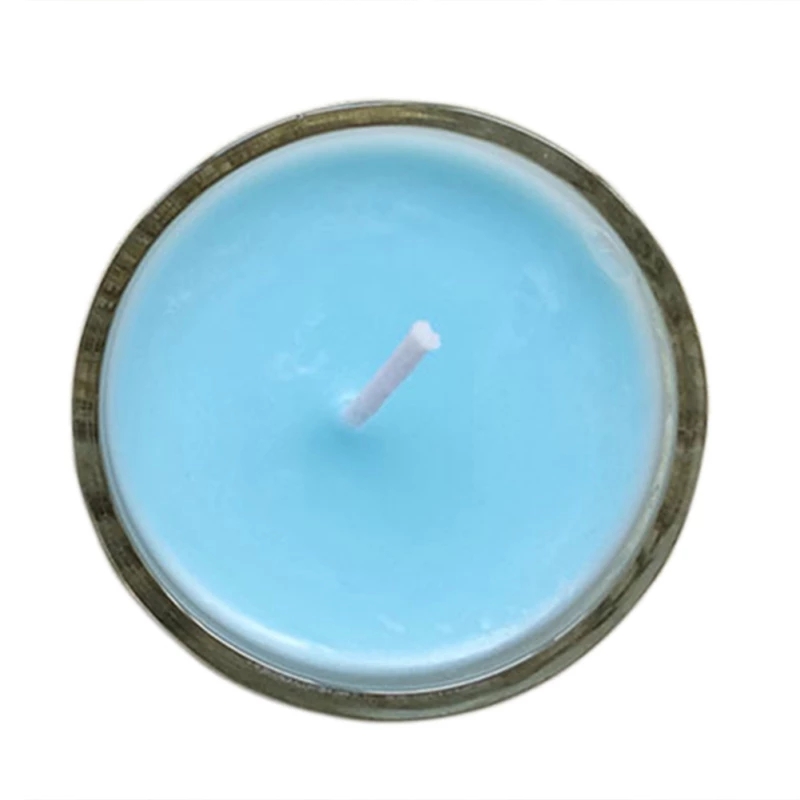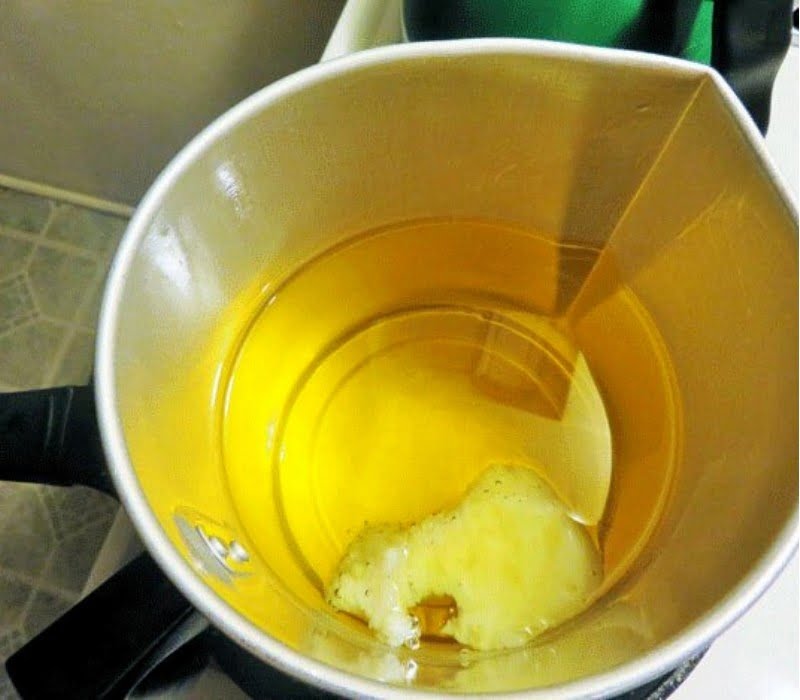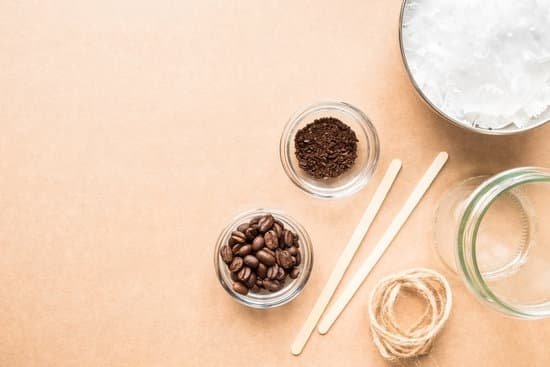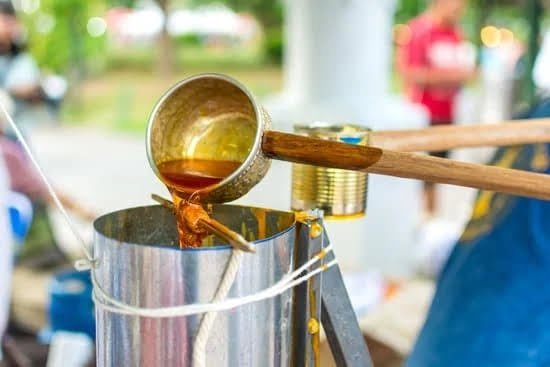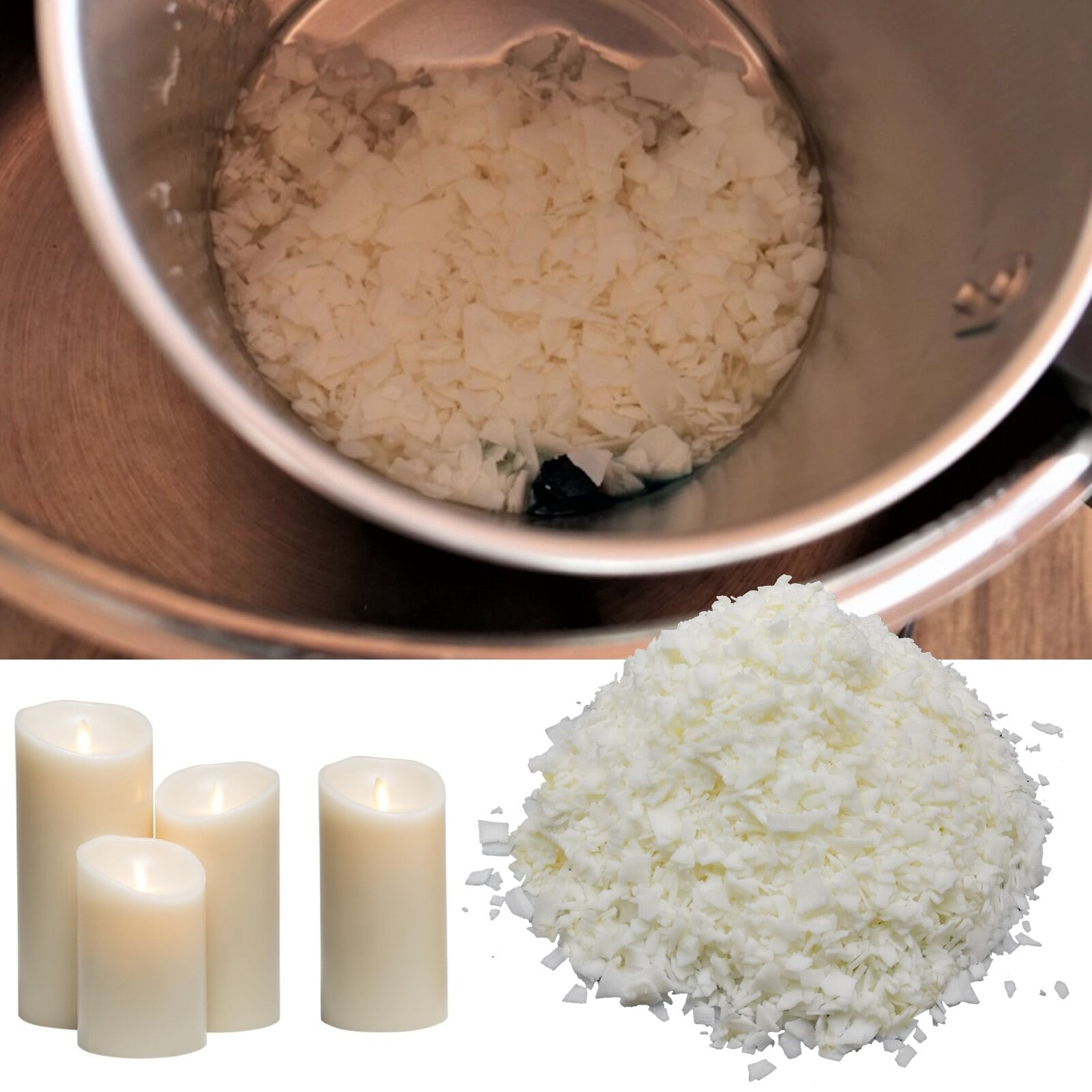Have you ever wondered, “Can you use essential oils for making candles?” The answer is yes. Essential oils have gained immense popularity for their various therapeutic benefits, including their ability to create beautifully scented candles. The combination of essential oils and candles not only enhances the ambiance of a space but also offers aromatherapy benefits that can uplift mood and promote relaxation.
Essential oils are natural extracts obtained from plants through processes like distillation or cold pressing. These potent oils carry the essence of the plant they are derived from, making them ideal for infusing candles with delightful fragrances. Some popular essential oils used in candle-making include lavender, peppermint, citrus, and eucalyptus, each offering its unique aromatic profile and potential health benefits.
When you incorporate essential oils into candle wax, you not only add enchanting scents but also harness the therapeutic properties of these oils. The natural fragrance emitted by essential oil candles can help reduce stress, improve mental focus, and create a soothing atmosphere in any setting. By exploring different blending techniques and dosages, you can customize your candles to suit your preferences and enjoy a truly personalized sensory experience.
What Are Essential Oils
Essential oils are highly concentrated plant extracts known for their aromatic properties. These oils are obtained through various extraction methods, such as steam distillation, cold pressing, or solvent extraction. The purity and quality of essential oils play a crucial role in their effectiveness and fragrance when used in candle-making. Some popular types of essential oils used in candle-making include lavender, eucalyptus, peppermint, lemon, and rosemary.
When considering whether you can use essential oils for making candles, it’s essential to understand the characteristics of each type of oil. For example, lavender essential oil is known for its calming properties and floral scent, making it a popular choice for relaxation candles.
On the other hand, citrus oils like lemon or orange can create bright and uplifting aromas ideal for creating energizing candles. Each essential oil brings its unique fragrance profile and benefits to the candle-making process.
Incorporating essential oils into candle wax requires careful consideration to achieve the desired scent intensity and longevity. Proper dosages based on the amount of wax used, blending techniques to create balanced fragrances, and adherence to safety precautions are vital aspects to keep in mind when making essential oil candles. Experimenting with different combinations of oils can lead to personalized scents that cater to individual preferences for relaxation, focus, or mood enhancement.
| Popular Essential Oils | Fragrance Profile |
|---|---|
| Lavender | Calming and floral |
| Eucalyptus | Refreshing and revitalizing |
| Lemon | Citrusy and uplifting |
| Rosemary | Herbaceous and invigorating |
Benefits of Using Essential Oils in Candles
Using essential oils in candles has become increasingly popular due to the numerous benefits they offer. Aromatherapy, a practice that uses natural plant extracts to promote health and well-being, is one of the main advantages of incorporating essential oils into candle-making. Different essential oils can have varying effects on mood and emotions, making them ideal for creating personalized scents that can help relax, energize, or uplift individuals.
In addition to their aromatherapeutic benefits, essential oils also provide a natural fragrance that is free from synthetic chemicals often found in commercial candles. The pure and subtle aroma of essential oil candles can create a soothing atmosphere in any space, enhancing relaxation and promoting a sense of calm. This natural fragrance is especially beneficial for individuals with sensitivities to artificial fragrances, as it
Apart from their aromatic qualities, essential oil candles also boast potential health benefits when used properly. Certain essential oils are known for their antibacterial, antifungal, or antiviral properties, which may help purify the air when the candle is lit. By choosing specific oils with these properties and incorporating them into candles, individuals can create an ambiance that not only smells good but also promotes a cleaner and healthier environment within their homes.
Safety Precautions
When it comes to using essential oils in candle-making, safety should always be the top priority. Although essential oils have numerous benefits, they are highly concentrated and can pose risks if not handled properly. Here are important tips to ensure safe usage of essential oils in your candle-making process:
Proper Dilution
One of the most crucial safety precautions when using essential oils in candles is proper dilution. Essential oils are potent and should never be used directly on the skin or mixed undiluted into candle wax. Always follow recommended dilution ratios to avoid skin irritation, allergic reactions, or even chemical burns. It is recommended to dilute essential oils with a carrier oil before adding them to the candle wax.
Handling Essential Oils
Essential oils should be handled with care to prevent accidental spills or exposure. When handling essential oils for candle-making, use droppers or pipettes to accurately measure and dispense the oil. Avoid direct contact with skin, eyes, or mucous membranes, as some essential oils can cause irritation or sensitization. Store essential oils in dark glass bottles away from sunlight and heat to maintain their potency.
Storage Guidelines
Proper storage of essential oils is crucial for maintaining their quality and effectiveness. Store essential oils in a cool, dark place away from children and pets. Ensure that the bottles are tightly sealed to prevent evaporation and oxidation. Check the expiration date of each oil as they can lose their therapeutic properties over time. By following these storage guidelines, you can prolong the shelf life of your essential oils and continue enjoying their benefits in your candles.
By adhering to these safety precautions, you
How to Use Essential Oils in Candle Making
Using essential oils in candle making is a wonderful way to create personalized, aromatic candles that not only look beautiful but also have therapeutic benefits. Whether you want to relax, uplift your mood, or simply enjoy a pleasant scent in your space, essential oils are the perfect natural solution.
In this section, we will explore how you can incorporate essential oils into candle wax effectively, the recommended dosages for different scents, and blending techniques to enhance the overall fragrance of your candles.
How to Use Essential Oils in Candle Making
- Choose high-quality essential oils: Start by selecting pure essential oils that are safe for candle-making. Ensure that the oils are specifically labeled for aromatherapy or candle use.
- Determine the right dosage: The amount of essential oil you add to your candle wax will depend on the type of oil and the desired strength of the fragrance. As a general guideline, you can use approximately 1 ounce of essential oil per pound of wax.
- Blend carefully: To create complex and well-balanced scents, consider blending two or more essential oils together. Experiment with different combinations to find your signature fragrance.
Incorporating essential oils into your candles opens up a world of possibilities for creating unique scents that suit your mood and preferences. Whether you prefer floral notes like lavender and rose or invigorating scents like citrus and peppermint, using essential oils allows you to customize your candles to cater to your individual taste. So next time you’re crafting candles at home, don’t forget to explore the diverse range of essential oils that can elevate your candle-making experience.
Best Essential Oils for Candle Making
When it comes to making candles using essential oils, choosing the right scents can make a significant difference in creating a relaxing and enjoyable atmosphere. Here is a list of popular essential oils that not only offer delightful fragrances but also come with their unique benefits for candle-making:
- Lavender Essential Oil: Known for its calming and soothing properties, lavender essential oil is a popular choice for candles meant to promote relaxation and reduce stress.
- Lemongrass Essential Oil: With its fresh, citrusy aroma, lemongrass essential oil can help uplift moods and create a refreshing ambiance in any space.
- Peppermint Essential Oil: Perfect for enhancing mental clarity and invigorating the senses, peppermint essential oil adds a cooling, minty scent to candles.
- Eucalyptus Essential Oil: Ideal for creating a spa-like atmosphere, eucalyptus essential oil offers respiratory benefits and a clean, invigorating fragrance.
- Orange Essential Oil: Bright and uplifting, orange essential oil can boost mood and energy levels while adding a sweet citrus scent to candles.
Each of these essential oils brings its own unique characteristics to candle-making, allowing you to customize your creations based on your preferences and desired effects. Whether you want to relax after a long day or energize your space, there is an essential oil that can cater to your specific needs. Experimenting with different combinations can also lead to exciting new scents that suit various occasions and settings.
In addition to their aromatic qualities, these essential oils also offer potential therapeutic benefits when used in candles. From promoting better sleep and reducing anxiety to improving focus and concentration, the use of essential oils in candles can enhance your overall well-being.
By understanding the properties of each essential oil and blending them thoughtfully, you can create personalized candles that not only smell amazing but also contribute positively to your mental and emotional state. So, next time you are considering making candles at home, don’t hesitate to incorporate these popular essential oils into your creations for a truly aromatic experience.
DIY Essential Oil Candle Recipes
Relaxing Lavender and Chamomile Candle
For a calming and soothing candle, try this recipe using lavender and chamomile essential oils. Start by melting soy wax flakes in a double boiler until completely melted. Remove from heat and let it cool slightly.
Once slightly cooled, add in 15-20 drops of lavender essential oil and 10-15 drops of chamomile essential oil, depending on your preference for fragrance strength. Stir well before pouring the mixture into your chosen candle container with a pre-waxed wick in place. Allow the candle to set and solidify before trimming the wick.
Invigorating Citrus Blend Candle
To uplift your mood and refresh your space, create an invigorating citrus blend candle using essential oils like grapefruit, lemon, and orange. Begin by melting beeswax or soy wax in a heat-safe container over low heat until fully melted. Remove from heat and let it cool slightly before adding 10 drops each of grapefruit, lemon, and orange essential oils.
Mix well to ensure even distribution of the scents before pouring the wax into a jar with a cotton wick. Let the candle cool completely before trimming the wick to size.
Cozy Vanilla and Cinnamon Spice Candle
For a warm and inviting scent perfect for fall or winter seasons, try making a cozy vanilla and cinnamon spice candle. Melt soy wax or beeswax in a microwave-safe bowl or double boiler until fully melted. Once melted, stir in 1 teaspoon of vanilla extract or vanilla essential oil along with 5-8 drops of cinnamon bark essential oil.
Pour the scented wax into a container of your choice with a wooden wick for added ambiance. Allow the candle to set and harden before lighting it up to enjoy the comforting aroma of vanilla and cinnamon spice filling your home.
By following these easy DIY essential oil candle recipes, you can customize your candles to suit your preferences while reaping the benefits of aromatherapy from natural essential oils. Experiment with different combinations of scents to create unique fragrances that appeal to your senses and enhance your living space with delightful aromas while enjoying their therapeutic benefits as well.
Conclusion
In conclusion, the use of essential oils in candle-making offers a plethora of benefits that go beyond just providing a pleasant fragrance. These natural extracts can enhance the atmosphere in your home, promote relaxation, and even offer potential health benefits through aromatherapy. By infusing your candles with essential oils, you not only create a soothing ambiance but also harness the therapeutic properties of these plant-derived oils.
When considering using essential oils for making candles, it is important to follow safety precautions to ensure proper handling and dilution. Remember that essential oils are highly concentrated substances that should be used in moderation to avoid any adverse reactions. By incorporating these aromatic essences into your candle-making process responsibly, you can enjoy the full range of benefits they have to offer without compromising on safety.
If you’re intrigued by the idea of creating your own essential oil candles, don’t hesitate to give it a try. Experiment with different blends, explore new fragrances, and personalize your candles to suit your preferences.
Not only does crafting your own candles allow you to customize the scent and ambiance of your space, but it also provides a creative outlet for self-expression. So why not embark on this aromatic journey and immerse yourself in the world of essential oil candle-making?
Frequently Asked Questions
Which Essential Oils Are Safe for Candle Making?
When it comes to candle making, certain essential oils are considered safe for use. Essential oils like lavender, peppermint, eucalyptus, and citrus oils are popular choices due to their strong scents that can hold up well in candles. It’s important to research each essential oil’s specific flashpoint and usage rate for candles to ensure safety.
Can You Use Regular Essential Oils in Candles?
While regular essential oils can technically be used in candles, it is generally not recommended. Regular essential oils may not have been tested for candle-making purposes, which could result in safety hazards like flashpoints that are too low or scents that don’t hold up well during the burning process.
It’s best to use essential oils specifically formulated for candle making.
Is It Better to Make Candles With Essential Oils or Fragrance Oils?
The choice between essential oils and fragrance oils for candle making ultimately depends on personal preference and desired outcome. Essential oils are natural plant extracts known for their therapeutic properties but can be more expensive than synthetic fragrance oils.
Fragrance oils offer a wider range of scents and tend to hold up better in candles over time. Experimenting with both types can help determine which works best for your preferences and needs.

Welcome to my candle making blog! In this blog, I will be sharing my tips and tricks for making candles. I will also be sharing some of my favorite recipes.

